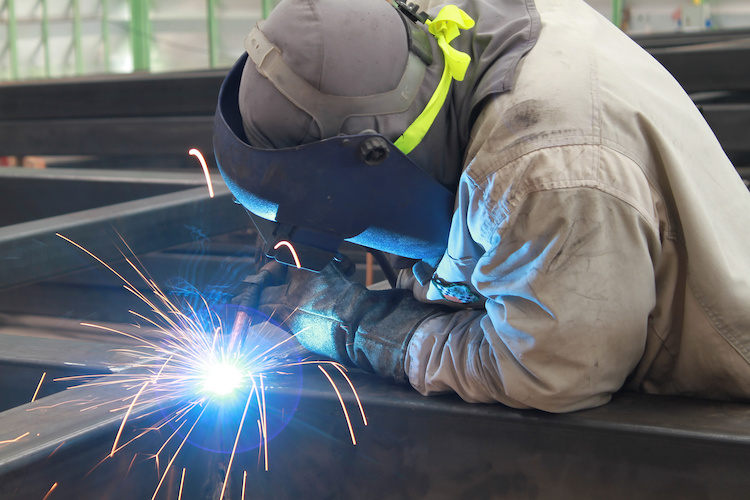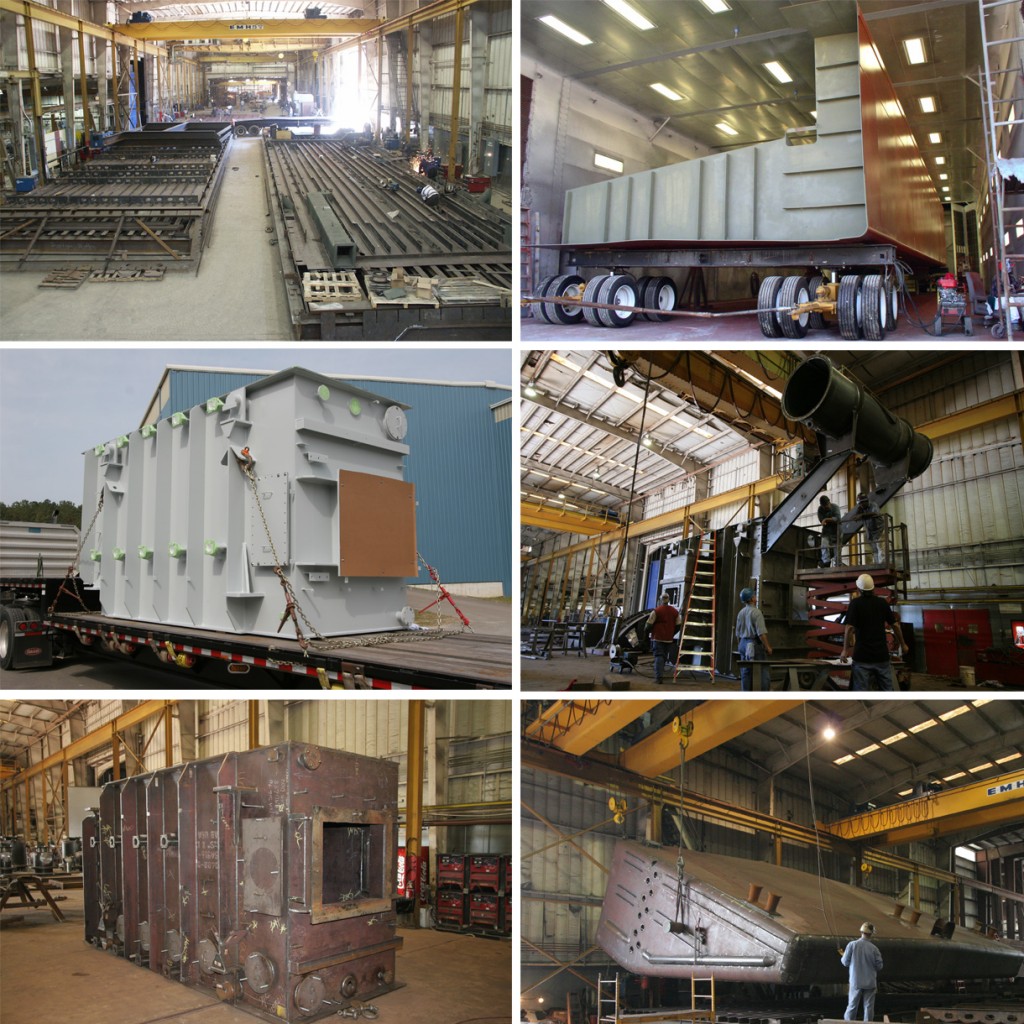Why Alpha Reo Is the Leading Option for Steel Reinforcement
Why Alpha Reo Is the Leading Option for Steel Reinforcement
Blog Article
Innovative Patterns in Steel Manufacture: Enhancing Sturdiness and Precision
In the realm of steel fabrication, the search of longevity and precision has led to a wave of innovative patterns that are reshaping the sector. These fads are not just forming the present yet likewise laying the foundation for the future of steel manufacture, promising additional improvements in durability and accuracy.
Advanced Welding Technologies
In the world of steel fabrication, the adoption of innovative welding technologies has actually significantly changed the market's method to attaining remarkable quality and precision in structural welds. Advanced welding modern technologies, such as laser beam welding and friction stir welding, have become game-changers in the area. Laser beam welding uses a focused laser beam of light to sign up with metal elements with exceptional precision and rate, making it suitable for slim materials and detailed styles. On the various other hand, friction stir welding produces exceptionally strong bonds by mechanically intermixing the particles of the materials at the joint, removing the need for melting the steel. These innovations provide various benefits, including lowered heat-affected areas, marginal distortion, and improved mechanical properties in the welded joints. By leveraging these sophisticated welding methods, steel makers can elevate the toughness, strength, and precision of their architectural welds, satisfying the progressively requiring needs of modern-day building jobs.
Robotic Automation in Manufacture
Welcoming robot automation has ended up being a keystone of modern-day steel construction techniques, streamlining processes and enhancing effectiveness across the sector. Robotics are changing the way steel parts are produced, using unrivaled accuracy and speed while minimizing human mistake. These automated systems can handle repetitive tasks with regular precision, bring about better final result.
One trick benefit of robotic automation in steel construction is the capacity to function around the clock without exhaustion, considerably enhancing manufacturing output. This continuous operation decreases downtime and accelerates project timelines, inevitably saving prices for suppliers. Furthermore, robots can be programmed to do elaborate jobs that might be harmful or tough for human workers, enhancing safety and security in the work environment.
Furthermore, robot automation allows seamless combination with various other electronic innovations, such as computer-aided layout (CAD) software and Net of Things (IoT) systems (steel fixing). This interconnected approach enhances communication in between different stages of construction, enhancing workflows and making sure real-time monitoring and control. As the steel construction market proceeds to progress, robotic automation sticks out as a transformative force driving effectiveness and precision in manufacturing procedures

High-Strength Alloy Growth
The innovation of high-strength alloy advancement in steel fabrication is improving the market's method to improving product toughness and efficiency. High-strength alloys are engineered to display premium mechanical properties, such as raised tensile strength, durability, and rust resistance compared to conventional steel qualities. By incorporating these advanced alloys into manufacture processes, manufacturers can produce elements that withstand higher tension levels and severe environments, causing more long lasting and trusted output.
One trick benefit of high-strength alloy growth is the ability to lower product thickness without endangering architectural stability. This not only results in lighter-weight components yet also contributes to cost financial savings and enhanced effectiveness in fabrication and setting up processes. The improved strength-to-weight proportion of these alloys allows for the layout and construction of frameworks with higher load-bearing capabilities while minimizing general weight.
3D Modeling and Simulation Software Program
Developments in steel manufacture processes have actually been significantly driven by the integration of innovative 3D modeling and simulation software program tools. These tools permit fabricators to produce thorough virtual designs read this post here of their tasks, enabling them to imagine the final item with precision prior to any kind of manual labor begins. By replicating numerous tension aspects, ecological conditions, and structural tons, makers can maximize designs for enhanced toughness and efficiency. Additionally, 3D modeling and simulation software improve the manufacturing procedure by recognizing possible issues at an early stage, minimizing the demand for pricey rework and minimizing material waste.

Sustainable Practices in Steel Manufacturing
Incorporating lasting practices right into steel production procedures is essential for lessening environmental effect and ensuring long-lasting source accessibility. One vital sustainable technique is the adoption of energy-efficient modern technologies to decrease greenhouse gas exhausts during the steel production process. This includes using eco-friendly energy sources, such as solar or wind power, to power steel plants and implementing energy-efficient equipment to maximize power usage.
One more important facet of lasting steel manufacturing is the liable sourcing of resources. This entails guaranteeing that the iron ore and other sources made use of in steelmaking are obtained from ethical and ecologically pleasant resources. By advertising openness in the supply chain and sticking to strict environmental standards, steel makers can lessen the adverse impacts of resource extraction on local environments and areas.

Conclusion
In conclusion, the cutting-edge patterns in steel fabrication such as innovative welding modern technologies, robot automation, high-strength alloy development, 3D modeling and simulation software, and lasting methods are enhancing the durability and accuracy of steel products. These advancements click are changing the steel construction industry by boosting top quality, sustainability, and effectiveness. It is clear that the future of steel fabrication hinges on embracing these sophisticated innovations to fulfill the demands of modern-day construction and production industries.
In the realm of steel manufacture, the pursuit of longevity and accuracy has actually led to a wave of ingenious fads that are reshaping the market.In the realm of steel manufacture, the adoption of sophisticated welding modern technologies has dramatically revolutionized the sector's approach to attaining premium high quality and accuracy in architectural welds. As the steel fabrication market proceeds to advance, robotic automation stands out as a transformative force driving effectiveness and accuracy in manufacturing processes.
Moreover, reusing and recycling steel scrap and waste materials play visit this site a considerable duty in boosting the sustainability of steel production. metal fabrication melbourne.In conclusion, the innovative patterns in steel construction such as innovative welding technologies, robotic automation, high-strength alloy development, 3D modeling and simulation software application, and sustainable practices are improving the toughness and accuracy of steel items
Report this page